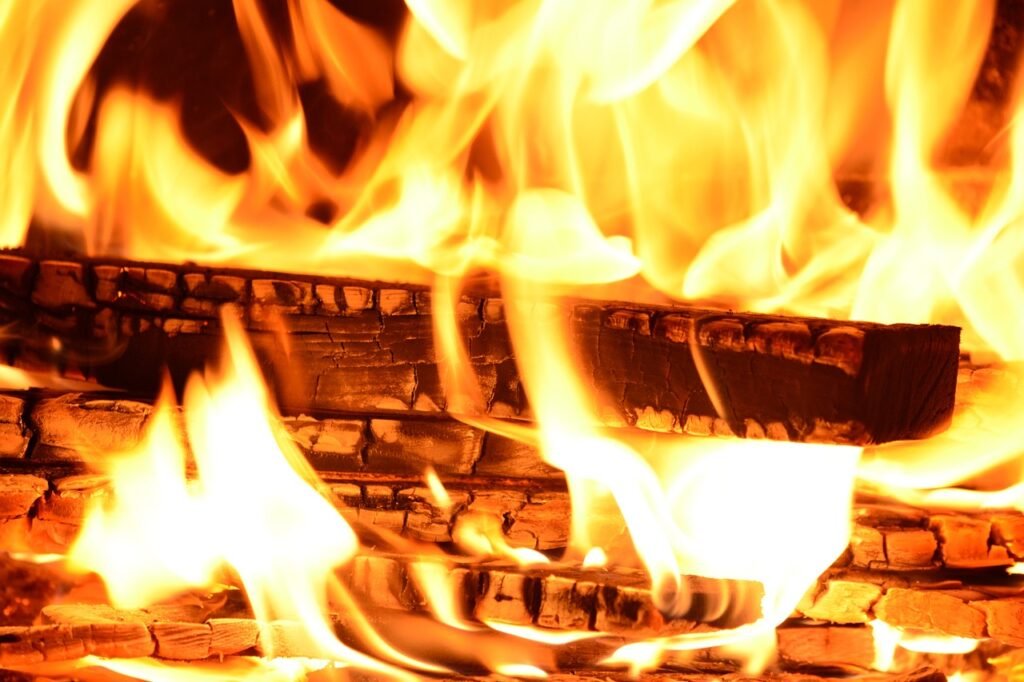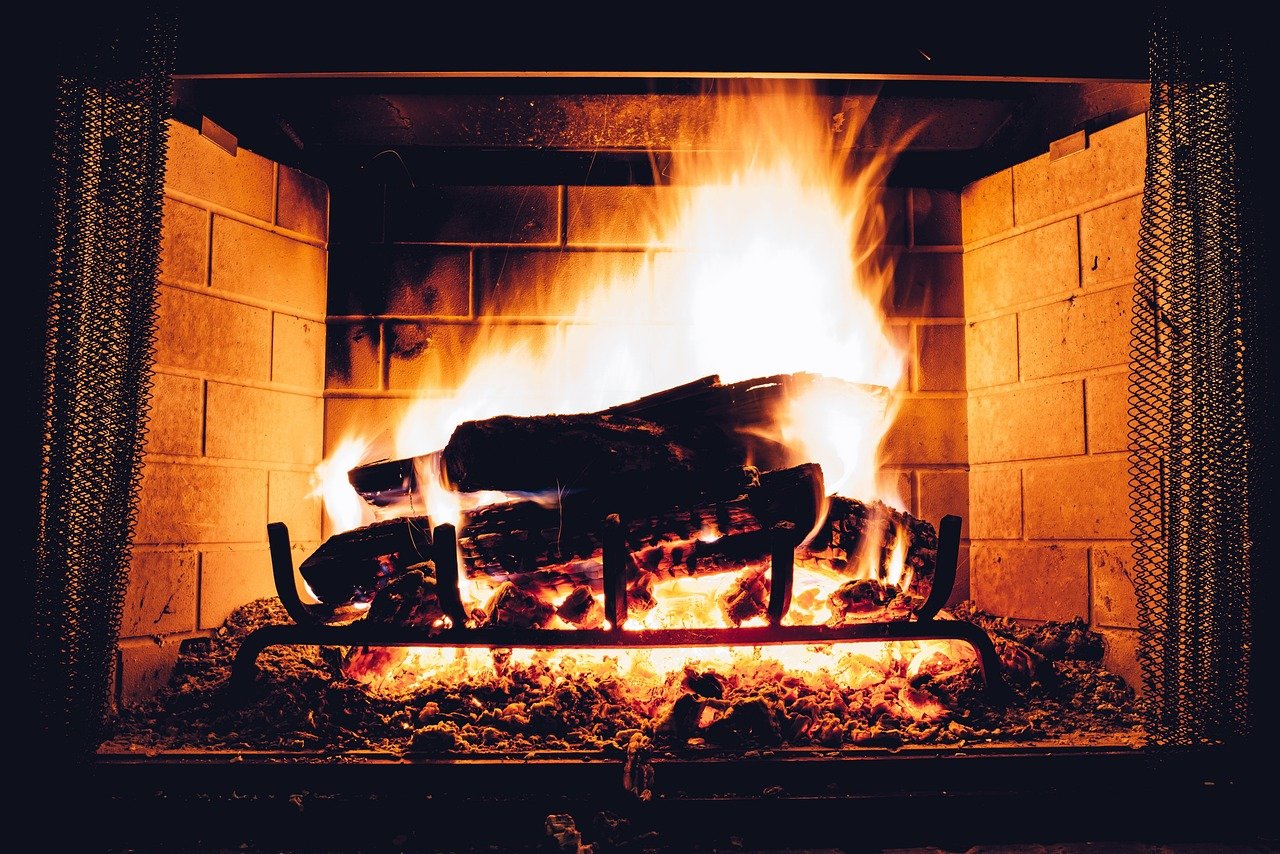Imagine curling up in front of a warm, crackling fireplace on a chilly evening, with a cup of hot cocoa in hand and a cozy blanket wrapped around you. Sounds like the perfect winter scene, doesn’t it? But to ensure this idyllic picture doesn’t turn into a nightmare of smoke and soot, it’s essential to keep your fireplace well-maintained. In this article, we’ll share some valuable tips to help you keep your fireplace in impeccable condition, guaranteeing flawless flames all season long. So, grab your notepad and get ready to learn the secrets to fireplace maintenance success!
Get The Best Fireplace Maintenance Products
1. Cleaning the Fireplace
Cleaning your fireplace is an important part of fireplace maintenance. Regular cleaning helps to ensure that your fireplace remains in good condition and functions efficiently. There are three key steps to cleaning your fireplace: clearing out ashes, removing soot and creosote, and wiping down the surrounding area.
1.1 Clearing Out Ashes
Before starting the cleaning process, it’s essential to clear out any ashes from the firebox. Use a small shovel or brush to gently remove the ashes, being careful not to create too much dust. Place the ashes in a metal container and dispose of them properly. Keeping the firebox clear of ashes allows for better airflow and prevents the buildup of soot and other debris.
1.2 Removing Soot and Creosote
Soot and creosote are byproducts of burning wood in your fireplace. They can accumulate on the walls and chimney liner, posing a fire hazard if not removed regularly. To remove soot and creosote, use a stiff wire brush or chimney brush. Scrub the walls of the firebox and chimney with upward strokes to dislodge the buildup. Be sure to wear gloves and a dust mask to protect yourself from the debris.
1.3 Wiping Down the Surrounding Area
During the cleaning process, it’s common for dust and debris to settle around the fireplace. Take a few moments to wipe down the surrounding area, including the hearth, mantel, and any nearby furniture. Use a damp cloth or a gentle cleaning solution to remove any dirt or residue. Keeping the surrounding area clean not only enhances the aesthetic appeal of your fireplace but also prevents the spread of soot and dust throughout your home.
2. Checking for Damages
Regularly inspecting your fireplace for damages is crucial to ensure its safety and effectiveness. There are three main areas you should focus on when checking for damages: the chimney structure, fireplace grate, and mortar and bricks.
2.1 Inspecting the Chimney Structure
Take the time to carefully inspect the chimney structure for any visible cracks, loose bricks, or mortar deterioration. These issues can compromise the integrity of your chimney and lead to costly repairs or even structural damage. Look for signs of water damage, such as discoloration or moss growth, as this can indicate the need for sealing or repairs.
2.2 Examining the Fireplace Grate
The fireplace grate provides support for logs and helps promote proper airflow. Check the grate for any signs of damage or wear, such as bent or broken bars. A damaged grate can affect the efficiency of your fireplace and may need to be replaced. Additionally, make sure the grate is properly sized for your fireplace to ensure optimal performance.
2.3 Assessing the Mortar and Bricks
Inspect the mortar and bricks for any signs of deterioration or gaps. Over time, mortar can degrade and become weak, causing bricks to loosen or shift. Replace any damaged mortar and secure loose bricks to maintain the structural integrity of your fireplace. This will not only prevent potential safety hazards but also help preserve the overall aesthetics of your fireplace.

This image is property of pixabay.com.
Find Out Where To Buy Fireplace Cleaning Tools
3. Maintaining Proper Airflow
Proper airflow is essential for your fireplace to function efficiently and produce clean and consistent flames. There are three key aspects to maintaining proper airflow: ensuring the damper opens and closes smoothly, clearing obstructions in the flue, and adjusting the air intake.
3.1 Ensuring the Damper Opens and Closes
The damper is a metal plate located at the top of your chimney or inside the flue. It controls the flow of air and smoke in and out of your fireplace. Regularly check that the damper opens and closes smoothly. If it becomes difficult to operate or doesn’t close tightly, it may need to be adjusted or replaced. A properly functioning damper helps regulate the airflow and prevents drafts when the fireplace is not in use.
3.2 Clearing Obstructions in the Flue
Obstructions in the flue, such as debris, leaves, or animal nests, can restrict airflow and lead to smoke backup or poor combustion. Use a flashlight to inspect the flue for any blockages and remove them carefully. If you notice an excessive amount of debris or are unsure how to safely clear the flue, it’s best to contact a professional chimney sweep for assistance.
3.3 Adjusting the Air Intake
Many fireplaces have an adjustable air intake that allows you to control the amount of oxygen supplied to the fire. Properly adjusting the air intake helps regulate the combustion process and prevents excessive smoke or smoldering fires. Experiment with different settings to find the optimal airflow for your specific fireplace. It’s important to note that adjusting the air intake should be done cautiously, as too much or too little air can affect the performance of your fire.
4. Removing Creosote Buildup
Creosote is a highly flammable substance that can accumulate in your chimney. Removing creosote buildup is crucial to maintain the safety of your fireplace and prevent the risk of chimney fires. There are three main steps to effectively remove creosote: understanding the dangers of creosote, regular chimney sweeping, and using anti-creosote products.
4.1 Understanding the Dangers of Creosote
Creosote is a tar-like substance that results from the incomplete combustion of wood in your fireplace. It accumulates on the walls of the chimney and can ignite if not removed regularly. Creosote buildup can lead to chimney fires, which can cause extensive damage to your home. Understanding the dangers of creosote reinforces the importance of regular maintenance and cleaning to keep your fireplace safe.
4.2 Regular Chimney Sweeping
Regular chimney sweeping is critical to remove creosote buildup from the chimney walls. It’s recommended to have your chimney professionally swept at least once a year, or more frequently if you use your fireplace regularly. Professional chimney sweeps have the equipment and expertise to thoroughly clean and remove creosote from your chimney, reducing the risk of chimney fires and improving the overall efficiency of your fireplace.
4.3 Using Anti-creosote Products
In addition to regular chimney sweeping, using anti-creosote products can help prevent creosote buildup. These products are designed to break down and loosen creosote, making it easier to remove during chimney sweeping. Some anti-creosote products can be added to the firewood or sprayed directly into the firebox. Consult with a professional chimney sweep for guidance on selecting and using the most appropriate anti-creosote product for your fireplace.

This image is property of pixabay.com.
5. Maintaining a Clean Firebox
A clean firebox not only enhances the visual appeal of your fireplace but also ensures proper combustion and prevents the accumulation of debris. There are three key steps to maintaining a clean firebox: clearing debris and ash, cleaning the firebox walls, and inspecting and replacing firebricks.
5.1 Clearing Debris and Ash
Regularly clear out any debris, such as twigs, leaves, or small particles of wood, from the firebox. Use a small brush or vacuum to remove the debris, being careful not to damage the firebricks or other components. Additionally, remove any remaining ash from the firebox to promote proper airflow and prevent the buildup of soot and debris.
5.2 Cleaning the Firebox Walls
Over time, the walls of the firebox can become coated with soot and residue. Cleaning the firebox walls helps maintain a clean and visually appealing fireplace. Use a stiff brush or sponge with a mild cleaning solution to gently scrub the walls. Avoid using abrasive materials that can damage the surface of the firebricks. Rinse with clean water and wipe dry with a cloth.
5.3 Inspecting and Replacing the Firebricks
Firebricks are designed to withstand high temperatures and protect the walls of the firebox. Regularly inspect the firebricks for any signs of damage, such as cracks or chips. Damaged firebricks should be replaced promptly to ensure proper heat distribution and prevent the risk of fire damage. Consult with a professional if you’re unsure how to safely replace firebricks or need assistance identifying the correct size and type for your fireplace.
6. Keeping the Chimney Cap Intact
The chimney cap plays a crucial role in protecting your chimney from external elements and preventing potential issues. Regularly inspecting and maintaining the chimney cap is essential for optimal chimney performance. There are three key aspects to keeping the chimney cap intact: understanding the importance of a chimney cap, inspecting the cap for damage, and repairing or replacing the chimney cap when necessary.
6.1 Importance of a Chimney Cap
A chimney cap serves as a protective barrier that prevents water, debris, and animals from entering your chimney. It also helps to enhance airflow and prevent downdrafts. By keeping your chimney cap intact, you can avoid costly chimney repairs caused by weather damage, animal nesting, or blockages.
6.2 Inspecting the Cap for Damage
Regularly inspect the chimney cap for any signs of damage, such as corrosion, rust, or missing parts. Additionally, check for debris accumulation or signs of animal nesting. If you notice any issues, it’s essential to address them promptly to maintain the integrity of your chimney. A damaged chimney cap can lead to water damage, chimney blockages, or even a decreased lifespan of your fireplace system.
6.3 Repairing or Replacing the Chimney Cap
If your chimney cap is damaged or missing, it’s crucial to take immediate action to repair or replace it. Contact a professional chimney technician to assess the condition of your chimney cap and provide the appropriate solution. They will ensure that the replacement cap is properly fitted and secured to effectively protect your chimney.

This image is property of pixabay.com.
7. Preventing Water Damage
Water damage is a common issue that can affect the structural integrity of your chimney and fireplace. Taking preventive measures to protect your chimney from water damage is essential for long-term maintenance. There are three main steps to prevent water damage: installing a chimney crown, sealing masonry with waterproofing, and clearing gutters and downspouts.
7.1 Installing a Chimney Crown
A chimney crown is a concrete or metal cap that covers the top of your chimney. It helps prevent water from entering the chimney and directs it away from the masonry. If your chimney does not have a crown or if the existing crown is damaged, consider installing or repairing it. A properly constructed chimney crown can significantly reduce the risk of water damage and prolong the lifespan of your chimney.
7.2 Sealing Masonry with Waterproofing
Waterproofing is a crucial step in protecting the masonry of your chimney from water penetration. Apply a high-quality waterproofing sealer to the exterior masonry surfaces, including the bricks, mortar, and chimney cap. This sealer creates a barrier that repels water, preventing it from being absorbed by the masonry. Be sure to choose a waterproofing product specifically designed for chimney use and follow the manufacturer’s instructions for application.
7.3 Clearing Gutters and Downspouts
Properly functioning gutters and downspouts play a vital role in directing water away from your chimney. Regularly clean and clear your gutters and downspouts to ensure they are free from debris or blockages. This will prevent water from overflowing and cascading down the sides of your chimney, minimizing the potential for water damage. Consider installing gutter guards to reduce the need for frequent cleanings and help keep your gutters clear.
8. Storing Firewood Properly
Storing firewood properly is essential for maintaining its quality and preventing any moisture-related issues. Follow these three key steps to ensure that your firewood remains dry and ready for efficient burning: choosing the right firewood, stacking firewood with airflow in mind, and protecting firewood from moisture.
8.1 Choosing the Right Firewood
Selecting the right firewood is crucial for efficient and clean burning. Hardwood, such as oak or maple, is favored for fireplaces due to its dense composition and longer burn time. Avoid using green or unseasoned wood, as it contains high moisture content and can create excessive smoke and creosote buildup. Seasoned firewood, which has been properly dried for at least six months, is the optimal choice as it burns more efficiently and generates less creosote.
8.2 Stacking Firewood with Airflow in Mind
When stacking firewood, it’s important to consider proper airflow to facilitate drying and prevent moisture retention. Stack the firewood in a crisscross or “log cabin” pattern, allowing for gaps between the logs for air circulation. Avoid stacking firewood directly against the exterior of your home or against the chimney, as this can create a moisture trap and increase the risk of pests or mold growth.
8.3 Protecting Firewood from Moisture
Firewood should be stored in a dry and well-ventilated area to prevent moisture absorption. Consider using a firewood rack or elevated platform to keep the wood off the ground. This helps promote airflow and prevents direct contact with moisture from the soil. Use a waterproof cover or tarp to shield the firewood from rain or snow, ensuring it remains dry and ready for use.
9. Regularly Inspecting and Cleaning Chimney Cap
Regularly inspecting and cleaning your chimney cap is essential for the long-term maintenance of your fireplace system. By following these three steps, you can ensure that your chimney cap remains in optimal condition: understanding the importance of chimney cap inspection, removing debris and nesting materials, and cleaning and maintaining the chimney screen.
9.1 Importance of Chimney Cap Inspection
Regular inspections of your chimney cap are crucial to detect any issues and address them promptly. A damaged or malfunctioning chimney cap can lead to various problems, including water damage, chimney blockages, and even animal infestations. By routinely inspecting your chimney cap, you can identify and fix any issues before they cause significant damage or impact the proper functioning of your fireplace.
9.2 Removing Debris and Nesting Materials
During your chimney cap inspection, it’s important to remove any debris or nesting materials that may have accumulated. This can include twigs, leaves, or even animal nests. Use a brush or gloved hand to safely clear the debris and dispose of it properly. Removing obstructions ensures that your chimney cap can effectively perform its function and allows for proper airflow in the chimney.
9.3 Cleaning and Maintaining the Chimney Screen
If your chimney cap has a screen component, it’s vital to clean and maintain it regularly. The screens can become clogged with debris, reducing their effectiveness in preventing pests, leaves, or other materials from entering your chimney. Use a soft brush or cloth to gently clean the screen, removing any accumulated dirt or cobwebs. Ensure that the screen is securely attached and free from any damage that may compromise its functionality.
10. Professional Fireplace Maintenance
While regular upkeep is essential for maintaining the health of your fireplace, it’s equally important to seek professional maintenance on a regular basis. By hiring a certified chimney sweep and scheduling annual inspections, you can ensure that your fireplace receives the necessary expertise and care. Understanding the benefits of professional maintenance will reinforce the value of entrusting your fireplace to skilled professionals.
10.1 Hiring a Certified Chimney Sweep
When it comes to maintaining your fireplace, hiring a certified chimney sweep is highly recommended. Certified chimney sweeps have undergone extensive training and possess the knowledge and skills to identify and address potential issues. They have specialized tools and equipment to clean and inspect your chimney thoroughly. By hiring a certified professional, you can have peace of mind knowing that your fireplace is in capable hands.
10.2 Scheduling Annual Inspections
Scheduling annual inspections with a professional chimney sweep is essential for the long-term safety and performance of your fireplace. During these inspections, the chimney sweep will thoroughly examine your fireplace and chimney system, identifying any potential hazards or maintenance needs. Early detection of issues can prevent costly repairs and extend the lifespan of your fireplace.
10.3 Understanding the Benefits of Professional Maintenance
Investing in professional maintenance offers a range of benefits for your fireplace. Certified chimney sweeps can identify hidden issues, such as chimney blockages or structural damage, that may not be apparent to an untrained eye. They can also provide valuable advice on proper fireplace usage and maintenance techniques. Additionally, professional maintenance helps to maintain the warranty of your fireplace system, ensuring that it remains valid and protects your investment.
In conclusion, by following these comprehensive fireplace maintenance tips, you can keep your fireplace in impeccable condition. Regular cleaning, checking for damages, maintaining proper airflow, removing creosote buildup, and professional maintenance are all crucial aspects of fireplace care. With proper attention and regular maintenance, your fireplace will provide you with warmth, ambiance, and peace of mind for years to come.




